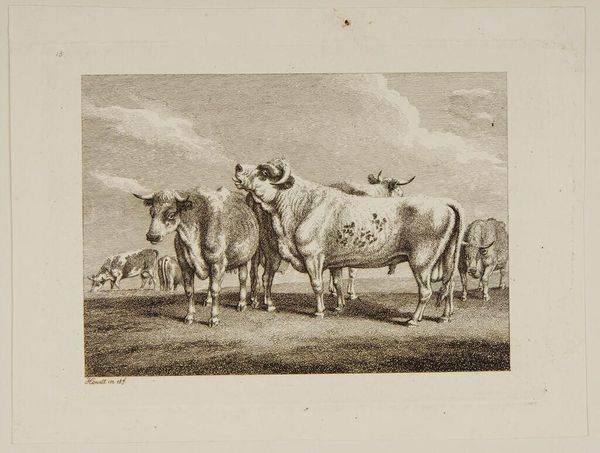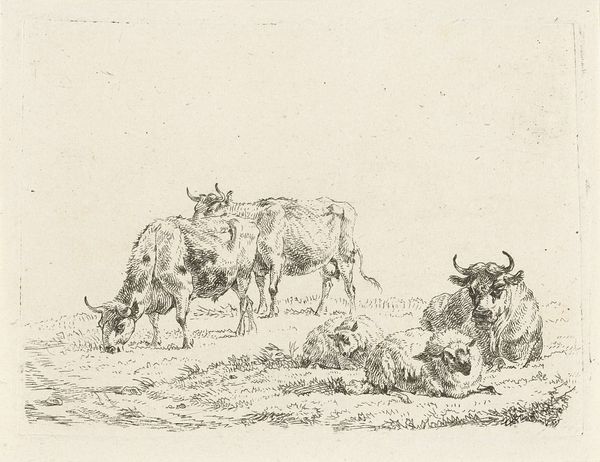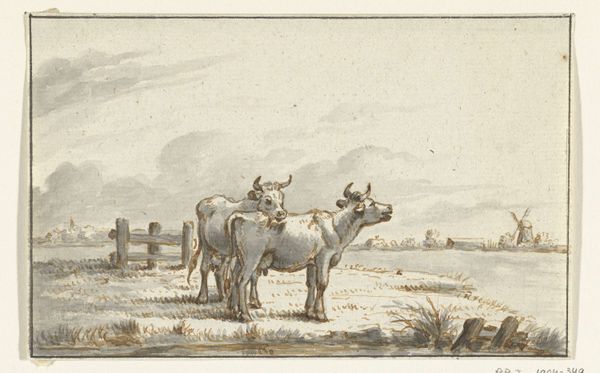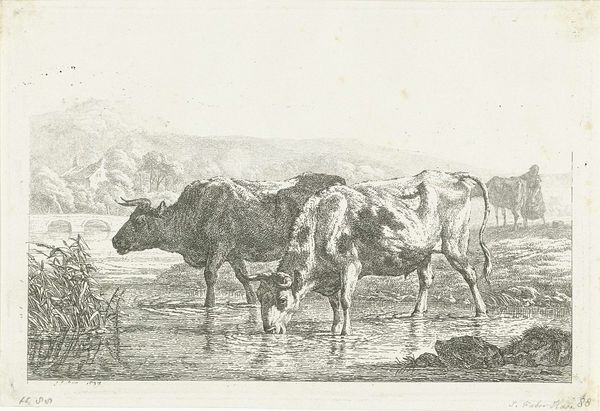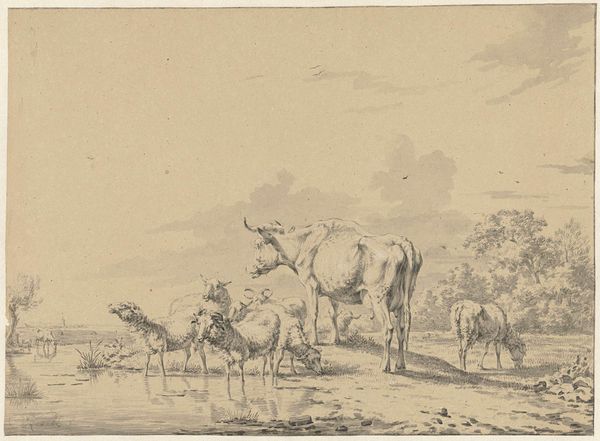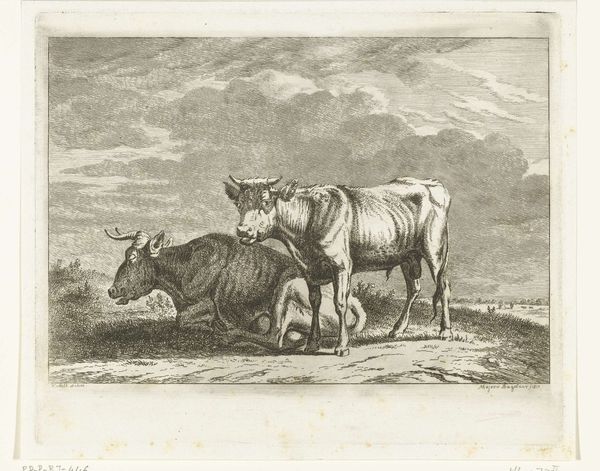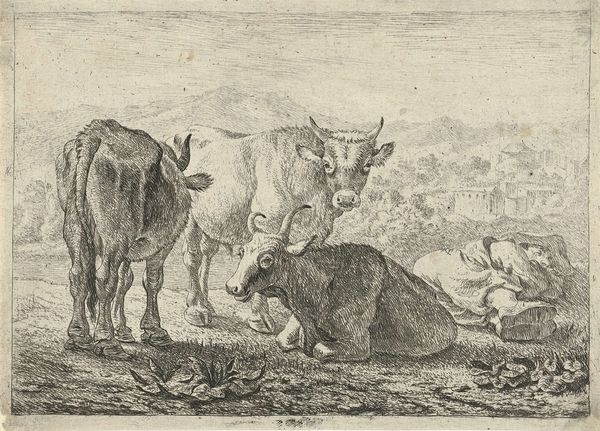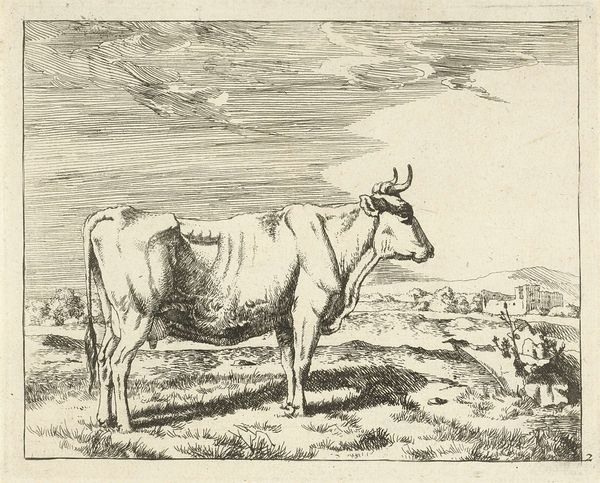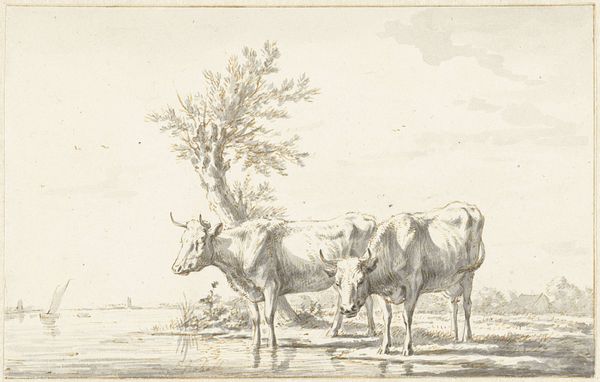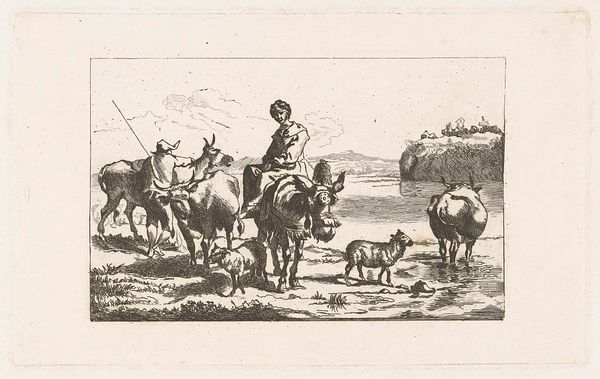
drawing, watercolor, ink
#
drawing
#
landscape
#
watercolor
#
ink
#
romanticism
#
watercolour illustration
#
realism
Dimensions: height 101 mm, width 173 mm
Copyright: Rijks Museum: Open Domain
Curator: Immediately, I am struck by the tranquility. A certain stillness in this simple scene of cattle evokes a sense of rural harmony, doesn't it? Editor: It certainly does. Here we have "Group of Six Bulls," a watercolor and ink drawing created sometime between 1775 and 1833 by Jean Bernard. It currently resides in the Rijksmuseum. Curator: Six bulls, or are they oxen? The one in the rear certainly stands apart, both physically and symbolically, doesn't it? He seems almost aloof, facing away from the group. What might that suggest? Editor: Perhaps the artist is reflecting on the social dynamic, and the inherent tension between the individual and the herd? Bulls were often potent symbols of strength, virility, but also, potentially, aggression. A single bull can easily become a metaphor for self-reliance versus belonging. And throughout art history, cattle symbolize everything from sustenance and prosperity, and sometimes simple country pleasures, particularly during a move away from classicism that prized landscape in a different way. Curator: I think what strikes me is its creation within a rapidly urbanizing Europe. It comes about, one must imagine, at a time where agrarian life was idealized because of its growing opposition. In those early years of industrialization, scenes such as this – carefully observed – start appearing in works commissioned by members of the mercantile class eager to present a noble version of the agrarian life. This romanticized depiction, devoid of labor or struggle, fits squarely within certain emerging market trends. Editor: That's interesting. It reminds me that seemingly simple imagery is rarely neutral. These bulls evoke layered interpretations based on cultural associations. Even their very solidity, carefully rendered by Bernard, projects certain societal expectations tied to strength and prosperity, a prosperity potentially endangered at the time this was rendered. Curator: And from a historian’s view, we have to question whose idyllic vision of agrarian life this image represents and its role in shaping a specific cultural memory. It would have been viewed by a very particular subset of society. Editor: Absolutely. Seeing beneath the image to explore such symbolic and historic layers truly enhances the experience of viewing "Group of Six Bulls". Curator: It allows us to reflect on the complex ways imagery reflects the dynamics of power and class, rather than simply seeing livestock standing in a field.
Comments
No comments
Be the first to comment and join the conversation on the ultimate creative platform.
